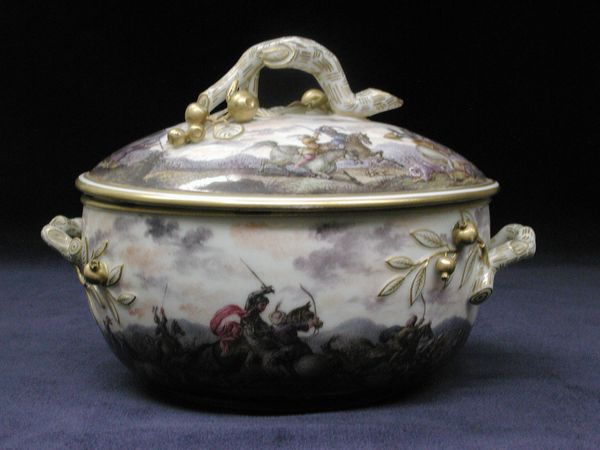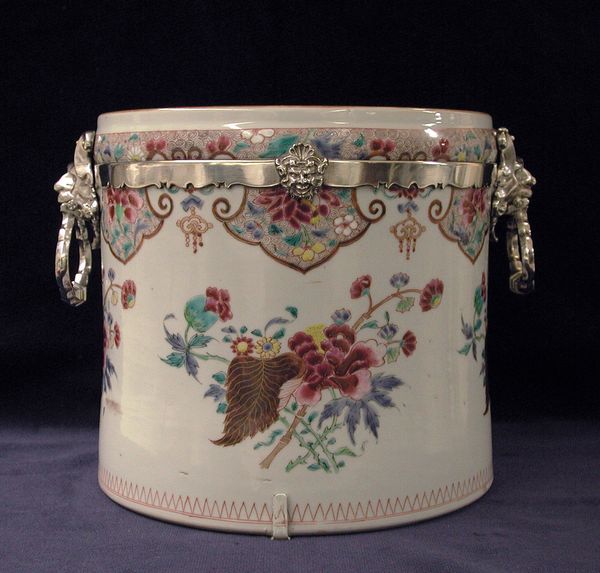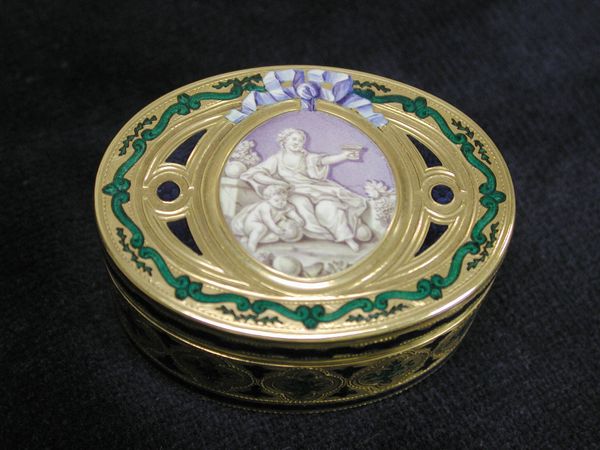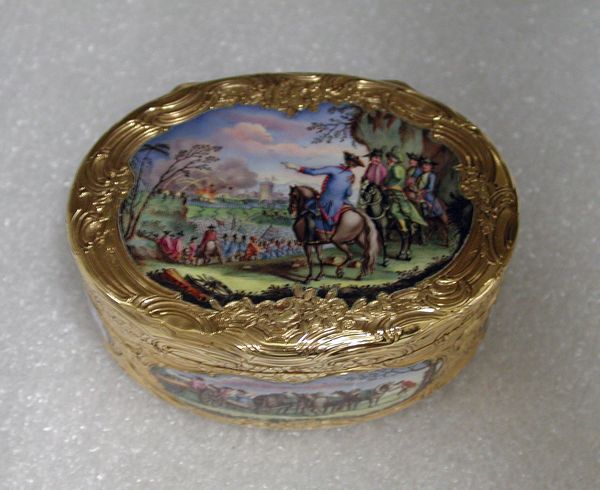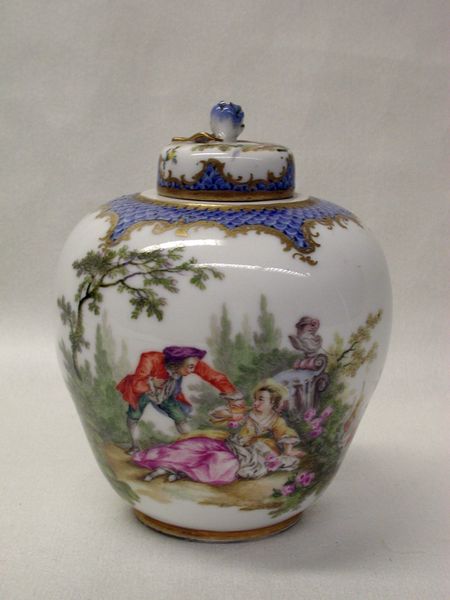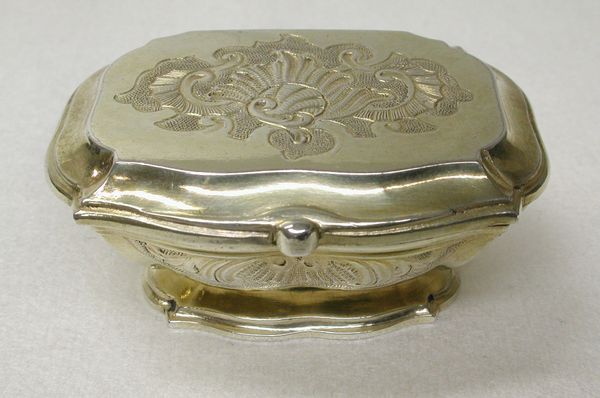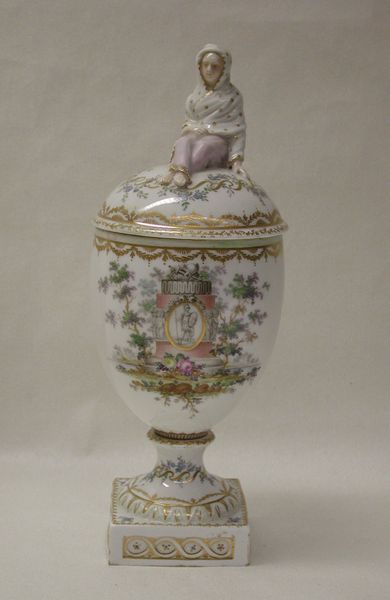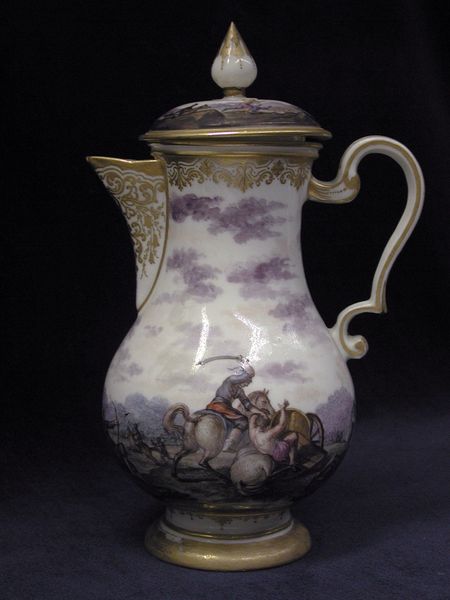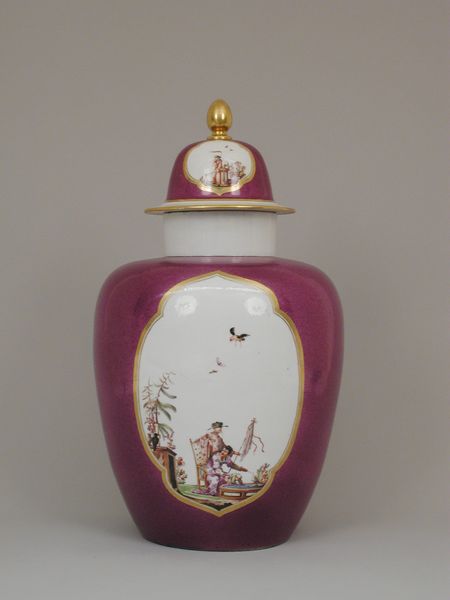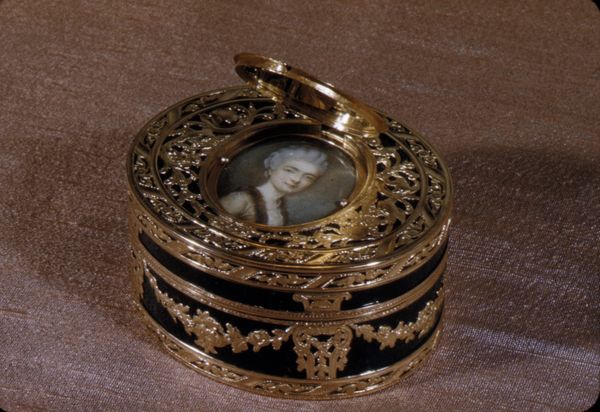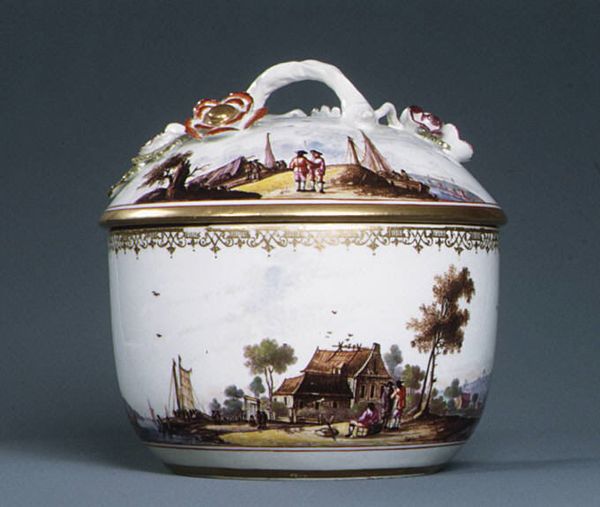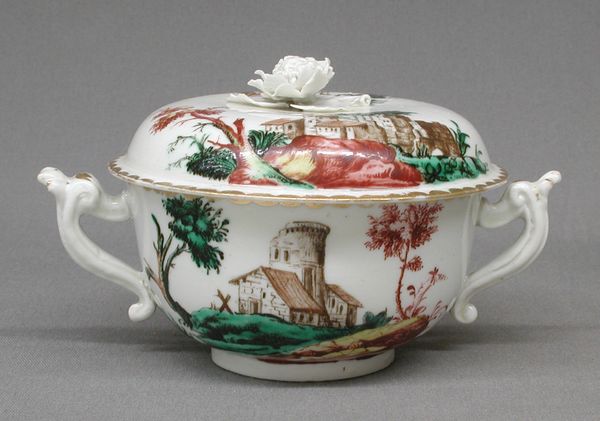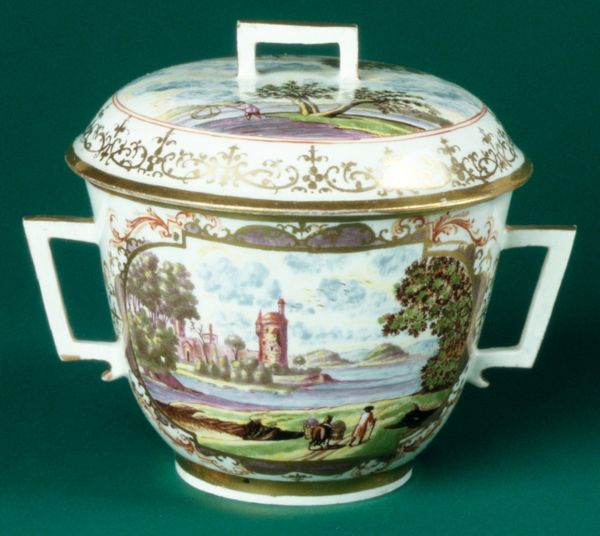
Sugar bowl (part of a service) 1743 - 1759
0:00
0:00
painting, ceramic, porcelain, sculpture
#
narrative-art
#
painting
#
ceramic
#
porcelain
#
figuration
#
sculpture
#
ceramic
#
men
#
history-painting
#
decorative-art
#
rococo
Dimensions: Height: 4 in. (10.2 cm)
Copyright: Public Domain
Curator: Here we have a delightful porcelain sugar bowl, crafted sometime between 1743 and 1759 by the Capodimonte Porcelain Manufactory. Note the gilded details and hand-painted figuration. Editor: It feels almost aggressively delicate. The images, while depicting hunting, have an ethereal quality because of the pale palette. The material choice and painted scene work ironically. Curator: Indeed. This sugar bowl, part of a larger service, exemplifies the Rococo style’s embrace of asymmetry and ornamental flourishes. Capodimonte was renowned for its soft-paste porcelain, and you can almost see the skilled labor embedded in every brushstroke, every curve. Considering its functionality, does the violence depicted on the surface become palatable? Editor: Well, consider the historical context. This was a status symbol, displayed, maybe even used by someone in a position of power, enjoying the benefits of colonial exploitation. This object isn’t simply decorative; it’s representative of an entire social hierarchy, which includes wealth obtained at the expense of others through hunting for sport and dominance over indigenous communities, depicted through romanticized lenses. Curator: An insightful point. The act of producing porcelain like this itself was fraught with complex labor relations. Skilled artisans toiled, often under demanding conditions, to create objects of luxury for the elite. We see the process as a physical expression of their labor within the Rococo tradition. The finished piece camouflages the means by which the sugar and material came into being for the commissioner. Editor: And the imagery obscures the true stakes of the time. The hunt romanticized while empires and wealth relied on hunting other peoples and destroying cultures across the globe, even when enjoyed over a civilized cup of tea. I have to imagine there are countless objects similar to this that romanticized power over nature. Curator: Precisely. The raw materials, the craftsmanship, the social context of its creation all contribute to a layered understanding of this seemingly innocuous sugar bowl. Editor: Seeing it through a wider lens like that helps bring the unacknowledged violence and oppression to light. I find that it becomes an almost unctuous representation. Curator: So next time you sweeten your tea, perhaps this delicate yet complex object might bring forth a different perception of the era from which this vessel emerged. Editor: Absolutely, because once you view art through a critical framework, it's hard to turn back. This becomes more than just porcelain now.
Comments
No comments
Be the first to comment and join the conversation on the ultimate creative platform.
